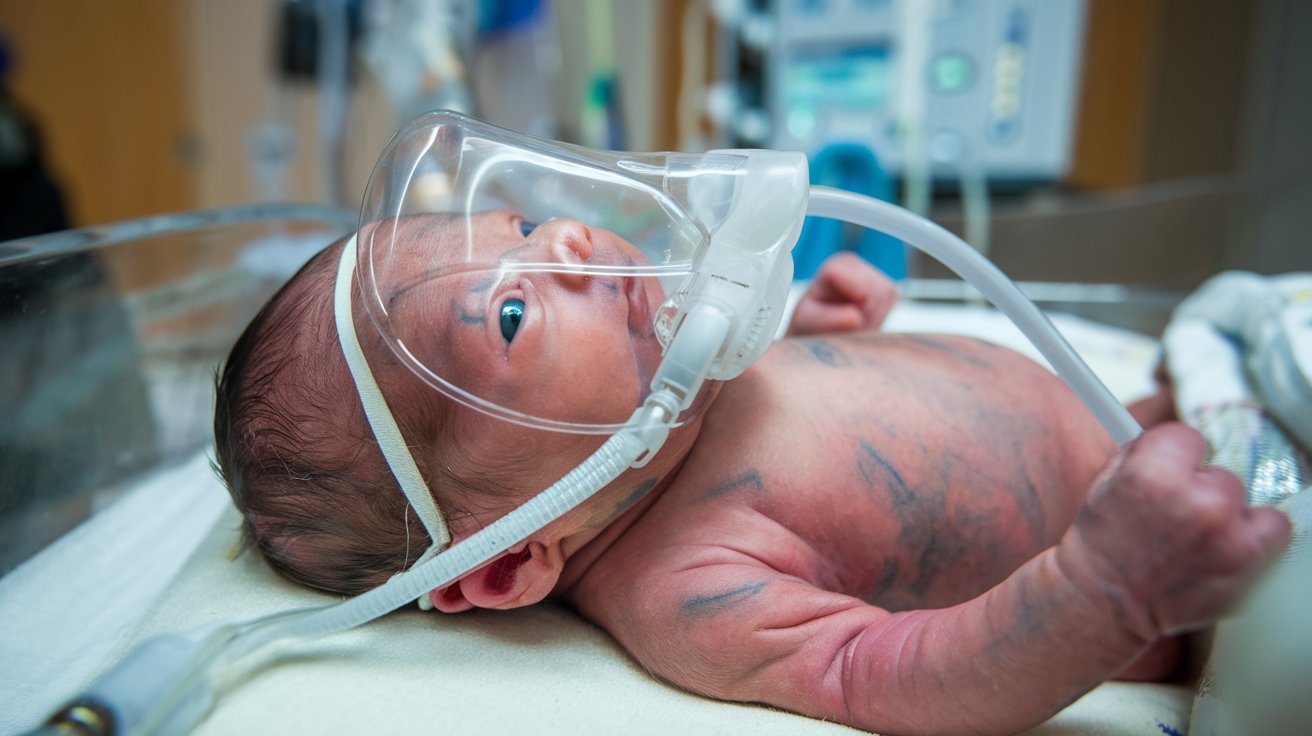
Infant Respiratory Distress Syndrome (IRDS) is a serious condition affecting premature babies due to insufficient surfactant production in their lungs. Surfactant, a crucial substance, helps lungs expand and contract properly. Without enough surfactant, breathing becomes difficult, leading to symptoms like rapid breathing, chest retractions, and a bluish tint to the skin. Premature infants, especially those born before 34 weeks, are at a higher risk. Factors like multiple pregnancies and maternal diabetes can increase this risk. Early diagnosis and treatments, including oxygen therapy and surfactant replacement, are vital for improving outcomes. Understanding IRDS is essential for providing the best care to these vulnerable infants.
Understanding Infant Respiratory Distress Syndrome
Infant Respiratory Distress Syndrome (IRDS) is a serious condition affecting premature infants. It primarily stems from the lack of surfactant, a crucial substance for lung function. Let's dive into the essential facts about IRDS.
-
Definition: IRDS is a lung disorder in premature infants caused by insufficient surfactant production, leading to breathing difficulties.
-
Causes: The main cause is the lack of surfactant, a lipoprotein that reduces surface tension in the alveoli, helping them stay open for proper breathing.
-
Gestational Age: The risk of IRDS increases with decreasing gestational age. Infants born at 24 weeks have nearly a 100% chance, while those born at 37 weeks have less than a 1% chance.
-
Incidence: Around 50,000 premature infants in the U.S. develop IRDS annually, with up to 5,000 fatalities.
Risk Factors and Symptoms
Understanding the risk factors and symptoms can help in early detection and treatment of IRDS.
-
Risk Factors: Multiple pregnancies, maternal diabetes, and being a White male increase the risk of IRDS.
-
Symptoms: Symptoms include labored and rapid breathing, chest retractions, nostril flaring during inhalation, and grunting while exhaling. Infants may also appear blue or gray due to low oxygen levels (cyanosis).
Diagnosis and Treatment
Early diagnosis and appropriate treatment are crucial for managing IRDS effectively.
-
Diagnosis: Diagnosis is based on clinical signs like respiratory distress, low oxygen levels, and abnormal chest x-rays. Blood tests and cultures may rule out other conditions like sepsis.
-
Treatment: Treatment involves providing extra oxygen, using CPAP to keep air sacs open, and administering artificial surfactant through a tube in the windpipe. Mechanical ventilation may be needed if breathing becomes too difficult.
-
Surfactant Replacement Therapy: This therapy has significantly improved outcomes, involving the administration of artificial surfactant to help lungs expand and contract properly.
-
Antenatal Steroids: Pregnant women at risk of preterm delivery often receive antenatal steroids to enhance fetal lung maturity and reduce IRDS risk.
Additional Supportive Measures
Supportive measures play a vital role in managing IRDS and improving outcomes.
-
Placental Transfusion: Transferring blood from the placenta to the infant immediately after birth can improve oxygenation and reduce the need for respiratory support.
-
CPAP and Ventilation: CPAP helps keep air sacs open, while mechanical ventilation provides additional support when necessary.
-
Fluid and Electrolyte Management: Proper management prevents complications like patent ductus arteriosus (PDA) and maintains adequate hydration and electrolyte balance.
-
Nutrition and Feeding: Trophic feeding and nutrition, including breast milk or formula, support growth and development.
-
Prophylactic Fluconazole: This may be used to prevent fungal infections, a potential complication in premature infants.
Complications of IRDS
IRDS can lead to several complications, making it essential to monitor and manage these risks.
-
Complications: IRDS can lead to septicemia, bronchopulmonary dysplasia (BPD), PDA, pulmonary hemorrhage, apnea/bradycardia, intraventricular hemorrhage (IVH), and periventricular leukomalacia (PVL).
-
Septicemia: Sepsis is a serious infection requiring aggressive antibiotic therapy.
-
Bronchopulmonary Dysplasia (BPD): BPD is a chronic lung disease characterized by inflammation and scarring.
-
Patent Ductus Arteriosus (PDA): PDA is a heart condition where the ductus arteriosus fails to close, leading to excessive blood flow to the lungs.
-
Pulmonary Hemorrhage: Bleeding in the lungs can be life-threatening and requires immediate medical attention.
-
Apnea/Bradycardia: Pauses in breathing and slow heart rate are common and managed with respiratory support and monitoring.
-
Intraventricular Hemorrhage (IVH): Bleeding in the brain's ventricles can be a complication, especially in very premature infants.
-
Periventricular Leukomalacia (PVL): Damage to the brain's white matter is often associated with neurodevelopmental and audiovisual handicaps.
Genetic and Demographic Factors
Certain genetic and demographic factors can influence the likelihood of developing IRDS.
-
Genetic Causes: Rarely, genetic mutations affecting surfactant production can cause IRDS, even in full-term babies.
-
Racial Demographics: IRDS affects all races but is more common in White premature infants.
-
International Data: The incidence is lower in developing countries due to factors like malnutrition and pregnancy-induced hypertension, as well as less accurate record-keeping.
Prevention and Research
Preventing premature delivery and ongoing research are key to reducing IRDS incidence and improving outcomes.
-
Prevention Strategies: Preventing premature delivery is crucial. Antenatal steroids can enhance fetal lung maturity.
-
Surfactant Protein-B Deficiency: This rare type of IRDS, caused by an abnormal pulmonary surfactant B gene, follows an autosomal recessive inheritance pattern and does not respond to surfactant replacement therapy.
-
Infant Mortality Rates: Despite advancements, IRDS remains a significant cause of infant mortality. However, surfactant replacement therapy has reduced mortality rates.
-
Research and Development: Ongoing research focuses on improving surfactant formulations, developing new treatments for complications, and enhancing neonatal care practices.
Key Points on Infant Respiratory Distress Syndrome
Infant Respiratory Distress Syndrome (IRDS) is a serious condition affecting premature infants due to insufficient surfactant in their lungs. Premature birth, multiple pregnancies, and maternal diabetes increase the risk. Symptoms include rapid breathing, chest retractions, and cyanosis. Diagnosis involves clinical signs, blood tests, and chest x-rays. Treatment includes oxygen therapy, CPAP, mechanical ventilation, and surfactant replacement. Antenatal steroids help reduce risk. Complications like bronchopulmonary dysplasia, patent ductus arteriosus, and intraventricular hemorrhage can arise. Genetic factors can also play a role. Despite advancements in treatment, IRDS remains a significant cause of infant mortality. Ongoing research aims to improve outcomes. Understanding IRDS is crucial for providing effective care to affected infants.
Was this page helpful?
Our commitment to delivering trustworthy and engaging content is at the heart of what we do. Each fact on our site is contributed by real users like you, bringing a wealth of diverse insights and information. To ensure the highest standards of accuracy and reliability, our dedicated editors meticulously review each submission. This process guarantees that the facts we share are not only fascinating but also credible. Trust in our commitment to quality and authenticity as you explore and learn with us.


